Mathanga Erissery is pumpkin and black-eyed peas (chowli) in a mild coconut gravy. This traditional recipe from Kerala is a part of the Sadya, the festive meals served on Onam and Vishu.
Pumpkin is a vegetable we all like at home and as a result, we make a lot of pumpkin dishes at home, including this Mathanga Erissery. However, I did not realise that I had not written about this traditional Onam Sadya recipe from Kerala till I read a comment by Sridevi of Coconut Craze on the Sri Lankan Pumpkin Curry that I posted recently.
I made this gluten-free, vegan Pumpkin dish today after many many months and took the opportunity to update this post from May 2014.
Tips to Make the Perfect Mathanga Erissery
- In Kerala, Erissery is made with red cowpeas or vanpayar. However, these are sometimes hard to find in other locations and so I made them with regular black-eyed peas or Chowli.
- Soak the black-eyed peas well so that they cook well. While I would recommend a minimum of 4 hours, I find that soaking them overnight gives the best results. On days when I forget to soak them at night, I soak them as soon as I get up so that they soak for 5 to 6 hours before I need to cook them for lunch.
- The pumpkin should be ripe (bright orange) yet firm. Ripe pumpkin gives the Mathanga Erissery the depth of flavour it needs.
- Use coconut oil for tempering, if possible.
- Add coconut to the tempering. Believe me it gives this dish a wonderful flavour and aroma.
- As with many dishes, let the Mathanga Erissery rest a bit after you make it, so that all the flavours meld and you get a delicious dish with layered flavours.
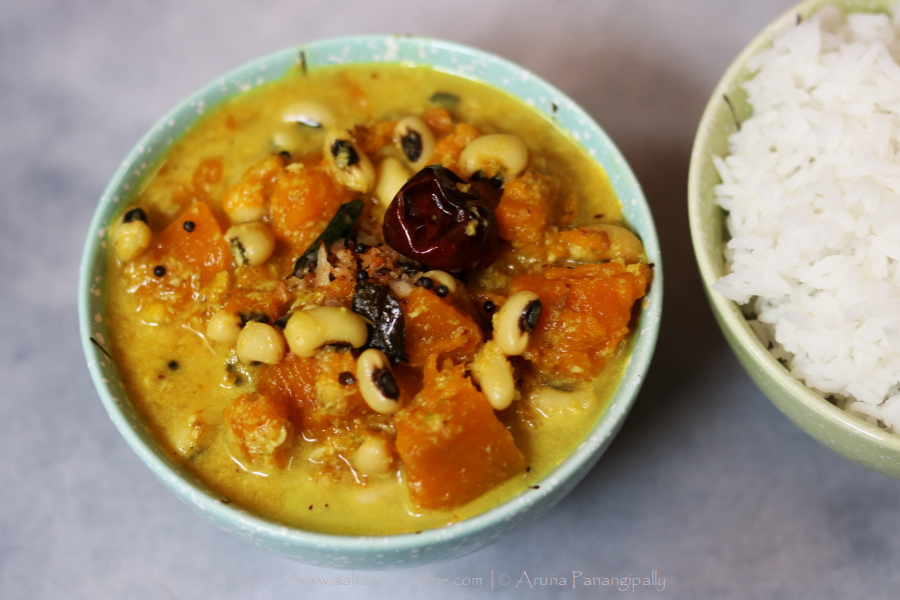
This is a no onion, no garlic recipe. However, many communities in Kerala use shallots or Madras onions in the gravy for Mathanga Erissery.
Erissery can also be made by replacing pumpkin with other vegetables such as raw jackfruit, yam, or raw banana.
Some Irrelevant Details About Me 🙂
My mother’s closest group of friends at work included a Parsi, a Malayalee, a Tamil Iyengar, a Palghat Iyer, a Sindhi, a Mangalorean, and a Maharashtrian.
All these people carried lunch from home and shared the goodies at meal times. Given that my mom was a foodie, anything new she ate and liked, she had to try out at home. As a result, we were quite used to having new dishes for lunch and dinner on Saturdays and Sundays. 🙂
The result was that I never sometimes quite realised that some of the dishes Amma made were not traditional Andhra dishes. They were something we ate regularly at home and when I discovered novel names for them later I life, I was vastly amused. Mathanga Erissery is one such dish. We have made is at home for as long as I can remember, but I discovered that it was a part of Kerala cuisine much later in life.
Some More Recipes for Onam Sadya
Here are a few more recipes that you can include in your menu for Vishu Sadya or Onam Sadya:
Find more traditional Kerala Sadya recipes in this Collection of Onam Sadya Recipes.
How to Make Mathanga Erissery for Onam Sadya
- Prepping the Peas
- Wash and soak 1/4 cup of black-eyed peas in 1 cup of water for 4 to 6 hours. I normally soak the peas overnight.

- Wash and soak 1/4 cup of black-eyed peas in 1 cup of water for 4 to 6 hours. I normally soak the peas overnight.
- Prepping the Pumpkin
- Use about 350 gms of pumpkin. After you peel it and discard the fibrous centre, you should have about 200 to 225 gms of pumpkin.
- Scrape off the soft inside of the pumpkin.
- Peel the pumpkin and chop the pumpkin into 2″ pieces.

- Cooking the Peas (I start with this as it is the most time consuming part)
- First, drain all the water from the soaked peas.
- Now, wash the soaked peas well under running water and add 1/2 cup fresh water.
- Pressure cook the black-eyed for 3 whistles (releases of pressure) or till the black-eyed peas are just soft enough to mash but still hold their shape. If you have not been able to soak the peas for 4 hrs or more, I would recommend you pressure cook for 4 whistles, and then lower the heat and let the peas cook for 10 minutes under pressure.

- When the peas are cooked, discard all the water from the pressure cooked peas.
- Making the Coconut Paste (I do this when the pumpkin is cooking)
- Grind 1/4 cup grated coconut, 1 tsp cumin seeds and 2 green chillies with 2-3 tbsp water to a thick, coarse paste.

- Grind 1/4 cup grated coconut, 1 tsp cumin seeds and 2 green chillies with 2-3 tbsp water to a thick, coarse paste.
- Making the Mathanga Erissery
- To a heavy-bottomed vessel, add the pumpkin cubes, 2 large pinches of turmeric, 1/4 tsp salt and just enough water to cover the pumpkin pieces.

- Over medium flame, cover and cook till the pumpkin pieces are cooked. When the pieces are cooked, they will become translucent and can be cut easily with a spoon.
- When the pumpkin is cooked, lower the heat.
- Use a spoon to gently break the pieces. Do not mash the pumpkin, just break the pieces.

- Now add the cooked black-eyed peas and the coconut paste.
- Using a gentle hand, mix well.
- If needed, add a little water and some salt. Do not add too much water; the Erissery should be like a thick stew.

- Simmer for a couple of minutes.
- Turn off the heat.
- To a heavy-bottomed vessel, add the pumpkin cubes, 2 large pinches of turmeric, 1/4 tsp salt and just enough water to cover the pumpkin pieces.
- Adding the Tempering
- In a tempering ladle, heat 1 tsp Coconut Oil.
- Add 1/2 tsp mustard seeds and wait till they splutter.
- Next, add 2 red chillies and a few curry leaves.
- Stir-fry for a few seconds till the chillies are well-roasted.

- Now add 1 tbsp grated coconut and stir-fry till the coconut dries out a bit, turns light brown and is fragrant.

- Add the tempering to the Mathanga Erissery and mix well.

- Let the Mathanga Erissery rest for 10 minutes before serving as a part of the Onam Sadya or Vishu Sadya. On regular days, just serve it with some rice. It tastes great with rotis as well.

Recipe for Mathanga Erissery
Mathanga Erissery: Pumpkin and Black-Eyes Peas Curry for Onam Sadya
Equipment
- Pressure Cooker
- Heavy-Bottomed Vessel or Wok
- Bowl for Pressure Cooking
- Spatula
- Grinder
- Knife
- Peeler
Ingredients
- 350 Gms Red Pumpkin
- 1/4 Cup Black-eyed peas (50 gms)
- 1/4 Cup Grated Fresh Coconut
- 1 tsp Cumin Seeds
- 2 Green Chillies
- 1/2 tsp Mustard Seeds
- 2 Red Chillies
- 1 tbsp Grated Coconut
- 1 tsp Coconut Oil or Vegetable Oil
- A Few Curry Leaves
- 1/2 tsp Turmeric
- Salt to Taste
Instructions
- Wash and soak 1/4 cup of black-eyed peas in 1 cup of water for 4 to 6 hours. I normally soak the peas overnight.
- Use about 350 gms of pumpkin. After you peel it and discard the fibrous centre, you should have about 200 to 225 gms of pumpkin.
- Scrape off the soft inside of the pumpkin.
- Peel the pumpkin and chop the pumpkin into 2″ pieces.
- Drain all the water from the soaked peas.
- Wash the soaked peas well under running water and add 1/2 cup fresh water.
- Pressure cook the black-eyed for 3 whistles (releases of pressure) or till the black-eyed peas are just soft enough to mash but still hold their shape. If you have not been able to soak the peas for 4 hrs or more, I would recommend you pressure cook for 4 whistles, and then lower the heat and let the peas cook for 10 minutes under pressure.
- When the peas are cooked, discard all the water from the pressure cooked peas.
- Grind 1/4 cup grated coconut, 1 tsp cumin seeds and 2 green chillies with 2-3 tbsp water to a thick, coarse paste.
- To a heavy-bottomed vessel, add the pumpkin cubes, 2 large pinches of turmeric, 1/4 tsp salt and just enough water to cover the pumpkin pieces.
- Over medium flame, cover and cook till the pumpkin pieces are cooked. When the pieces are cooked, they will become translucent and can be cut easily with a spoon.
- When the pumpkin is cooked, lower the heat.
- Use a spoon to gently break the pumpkin pieces. Do not mash the pumpkin.
- Add the cooked black-eyed peas and the coconut paste.
- Using a gentle hand, mix well.
- If needed, add a little water and some salt. Do not add too much water; the Erissery should be like a thick stew.
- Simmer for a couple of minutes.
- Turn off the heat.
- In a tempering ladle, heat 1 tsp Coconut Oil.
- Add 1/2 tsp mustard seeds and wait till they splutter.
- Add 2 red chillies and a few curry leaves.
- Stir-fry for a few seconds till the chillies are well-roasted.
- Add 1 tbsp grated coconut and stir-fry till the coconut dries out a bit, turns light brown and is fragrant.
- Add the tempering to the Mathanga Erissery and mix well.
- Let the Mathanga Erissery rest for 10 minutes before serving as a part of the Onam Sadya or Vishu Sadya. On regular days, just serve it with some rice. It tastes great with rotis as well.


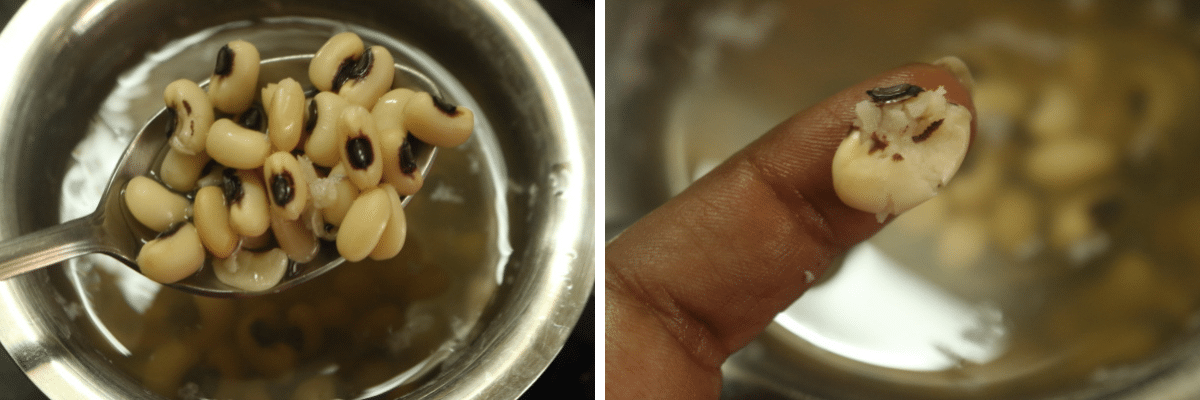
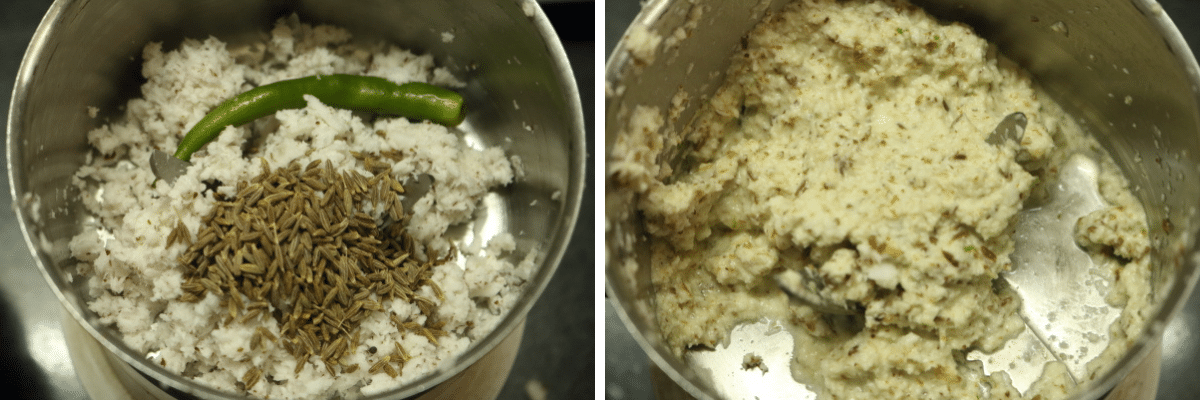


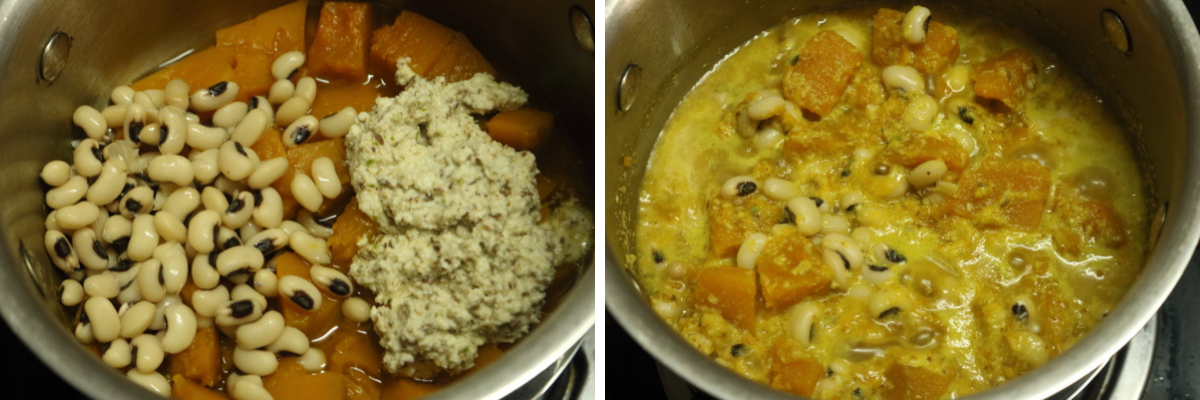


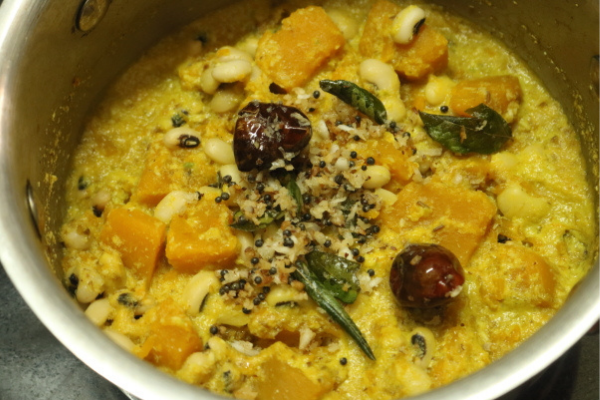
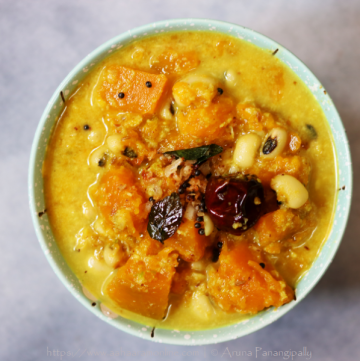

How endlessly delicious!
Ohh its mouthwatering! I want some 🙂
I love coconut and black eyed peas, so I’m sure this is the kind of gravy I would really enjoy eating. Thanks for sharing!
Lovely recipe and I loved reading about your Mum and Dad xx
my favorite 🙂 Long time since I made it! YUM
Never tried black-eyes peas with pumpkin – interesting 🙂
Is that where your knowledge of Sindhi food comes from? I love that about Mumbai. I grew up eating gujarati food at the homes of friends and developed a life-long love of it.
Yes…. I grew up in Mumbai and studied in a Sindhi-run college in Bandra. My best friend is Sindhi. My neighbours are Sindhi. 🙂
Thank you for mentioning me in your post. You are right…moving from your own circle into other cities exposes you to a lot of new culture and food. I started enjoying Gujarati and Punjabi food along with Swahili dishes in Africa. This is one dish that I can eat without a question.
want to try making this
https://www.pinterest.com/kumar65/onam-2015/